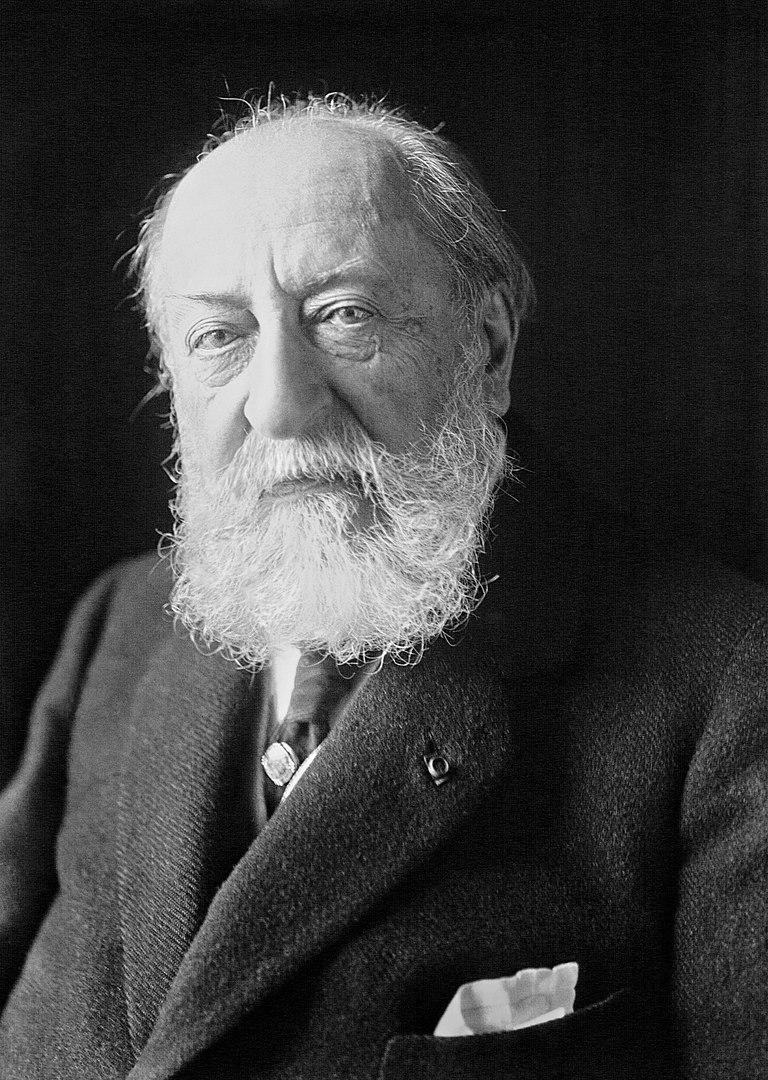October 9, 1835 – December 16, 1921

Camille Saint-Saëns, French organist, conductor, pedagogue and composer, was born on this day. He is described as one of the most wonderful musicians, an immortal, due to his musical versatility and natural endowment. Witnesses of his upbringing claim that his abilities were at the level of Mozart and Mendelssohn. Already at the age of two, he showed that he had absolute hearing, which helped him play the piano part in one of Beethoven’s violin sonatas at the age of five, to write his first work, the song Le Soir, at the age of six, and to play Mozart’s and Beethoven’s concertos by heart at the age of seven; concerto, one Hummel sonata, Bach’s Prelude and Fugue and several pieces by Handel and Kalkbrenner. Therefore, it is not surprising that already at the age of eleven he became famous throughout Europe; an article published on August 3, 1846 in the Boston Musical Gazette describes it best: “There is a boy in Paris, Saint-Saëns, who is only ten and a half years old, and plays the works of Handel, Bach, Mozart, Beethoven, and some modern masters, and he does not hold notes in front of him”. When playing, he possessed a brilliant technique, with considerable ease, limited dynamics and a tendency to play quickly. Nevertheless, he was seen first and foremost as a composer, and only then afterwards as a pianist. Although he wrote a large number of compositions in various musical forms, his favorite form was the symphonic poem. Among the twelve operas, Samson and Delilah stand out, performed on all major opera stages. In addition to numerous chamber works, oratorios, pascaglia, symphonies, vocal-instrumental forms, he composed five piano concertos, a concerto for violin, cello and orchestra. Special attention is drawn to the fact that he was the first to write music for a film – in 1909 for The Assassination of the Duke of Guise. However, Saint-Saëns was not only interested in music. He was engaged in criticism, literature, poetry, astronomy (he was a member of the French Astronomical Society), archeology and science in general. With all that, he was not an insignificant musicologist, but one of the first to study the way of playing the piano in the pre-Beethoven era. He was the president of the newly founded society “Ars Gallica” (Gallic, French art), an institution whose aim was to protect young French composers and to propagate their works. Romain Rolland made a remarkable observation about this society: “It is the cradle and sanctuary of French art. Everything great that was written in France from 1770 onwards passed through him”. His versatility is evidenced by the fact that he was the organist at the Church of St. Madeleine from 1858 to 1877. During that period, he also became a professor of composition. Richard Wagner highly appreciated this artist’s abilities, describing him with the words: “He plays with incredible confidence and manages to take in everything at a glance, even when it comes to the most complicated score.” In addition, this young man possesses an extraordinary memory. He played my scores, including Tristan, by heart, and he managed to single out not only the more important, but also the less important themes…”.
Camille Saint-Saëns, CC BY-SA 2.0, via Wikimedia Commons
